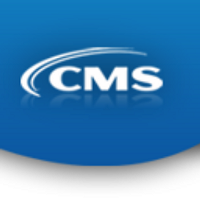 On December 20, 2016, the Centers for Medicare & Medicaid Services (CMS) (@CMSGov) finalized new Innovation Center models that continue the Administration’s progress to shift Medicare payments from rewarding quantity to rewarding quality by creating strong incentives for hospitals to deliver better care to patients at a lower cost. These models will reward hospitals that work together with physicians and other providers to avoid complications, prevent hospital readmissions, and speed recovery.
On December 20, 2016, the Centers for Medicare & Medicaid Services (CMS) (@CMSGov) finalized new Innovation Center models that continue the Administration’s progress to shift Medicare payments from rewarding quantity to rewarding quality by creating strong incentives for hospitals to deliver better care to patients at a lower cost. These models will reward hospitals that work together with physicians and other providers to avoid complications, prevent hospital readmissions, and speed recovery.
The announcement finalizes significant new policies that:
- Improve cardiac care: Three new payment models will support clinicians in providing care to patients who receive treatment for heart attacks, heart surgery to bypass blocked coronary arteries, or cardiac rehabilitation following a heart attack or heart surgery.
- Improve orthopedic care: One new payment model will support clinicians in providing care to patients who receive surgery after a hip fracture, other than hip replacement. In addition, CMS is finalizing updates to the Comprehensive Care for Joint Replacement Model, which began in April 2016.
- Provides an Accountable Care Organization opportunity for small practices: The new Medicare ACO Track 1+ Model will have more limited downside risk than in Tracks 2 or 3 of the Medicare Shared Savings Program in order to encourage more practices, especially small practices, to advance to performance-based risk.
These new payment models and the updated Comprehensive Care for Joint Replacement Model give clinicians additional opportunities to qualify for a 5 percent incentive payment through the Advanced Alternative Payment Model (APM) path under the Medicare Access and CHIP Reauthorization Act of 2015 (MACRA) and the Quality Payment Program. For the new cardiac and orthopedic payment models, clinicians may potentially earn the incentive payment beginning in performance year 2019 or potentially as early as performance year 2018 if they collaborate with participant hospitals that choose the Advanced APM path. For the Comprehensive Care for Joint Replacement model, clinicians may potentially earn the incentive payment beginning in performance year 2017. For the Track 1+ Model, clinicians may potentially earn the incentive payment beginning in performance year 2018, and the application cycle will align with the other Shared Savings Program tracks.
These models are being implemented by the CMS Innovation Center under section 1115A of the Social Security Act, with participation by all hospitals in selected geographic areas in order to yield more generalizable results, and additional protections for small and rural providers. The models will be referred to as:
- The Acute Myocardial Infarction (AMI) Model;
- The Coronary Artery Bypass Graft (CABG) Model;
- The Surgical Hip and Femur Fracture Treatment (SHFFT) Model; and
- The Cardiac Rehabilitation (CR) Incentive Payment Model.
CMS is also announcing the new Medicare ACO Track 1+ Model. This new opportunity, beginning in 2018, will allow clinicians to join Advanced Alternative Payment Models to improve care and potentially earn an incentive payment under the Quality Payment Program, created by the Medicare Access and CHIP Reauthorization Act of 2015 (MACRA). The new Medicare ACO Track 1+ Model will test a payment model that incorporates more limited downside risk than is currently present in Tracks 2 or 3 of the Medicare Shared Savings Program in order to encourage more rapid progression to performance-based risk.
For more information about the individual models finalized through this rule, visit the CMS Innovation Center website.
